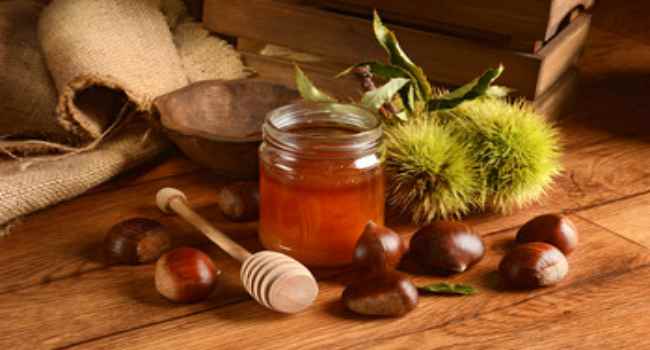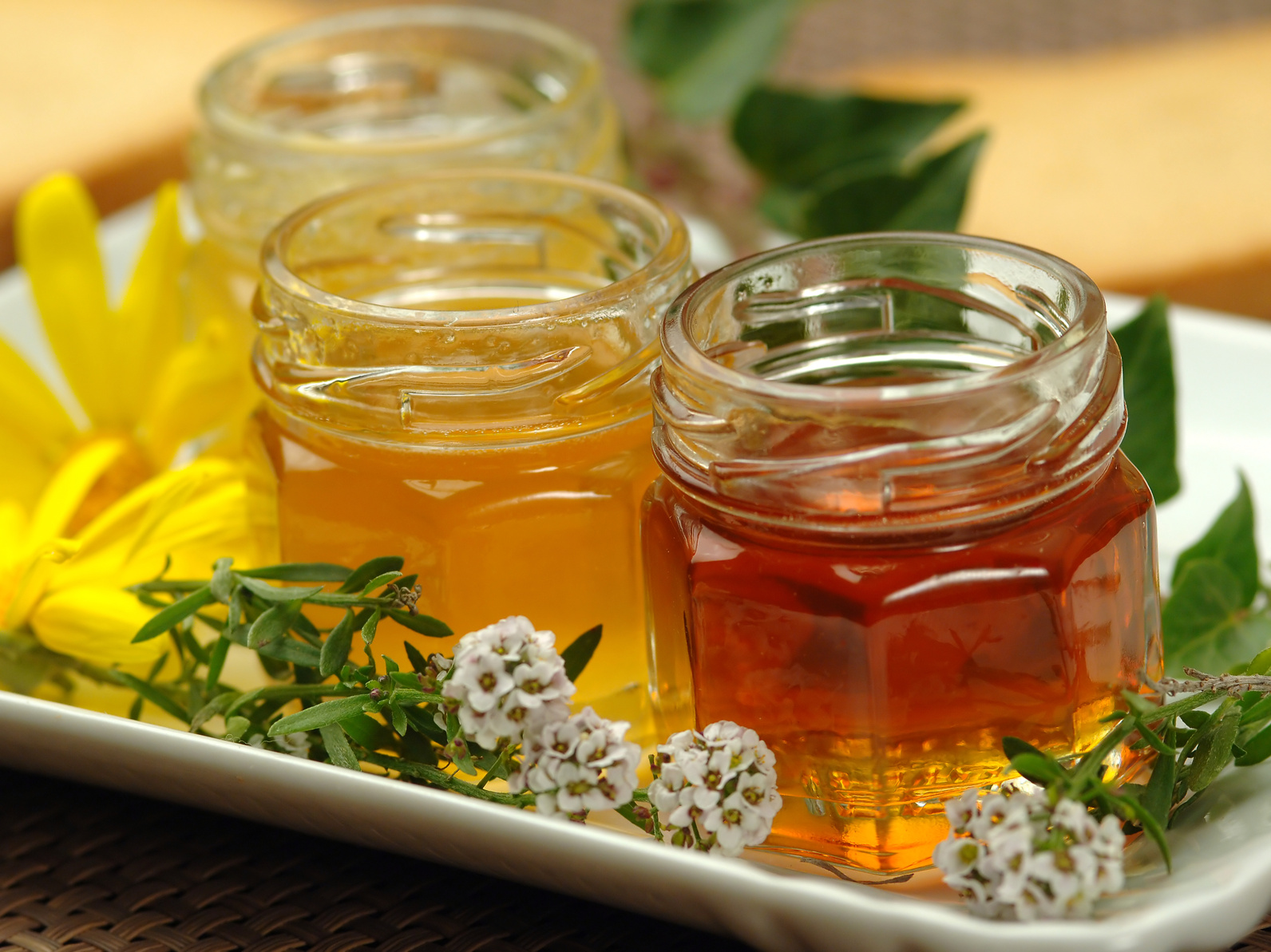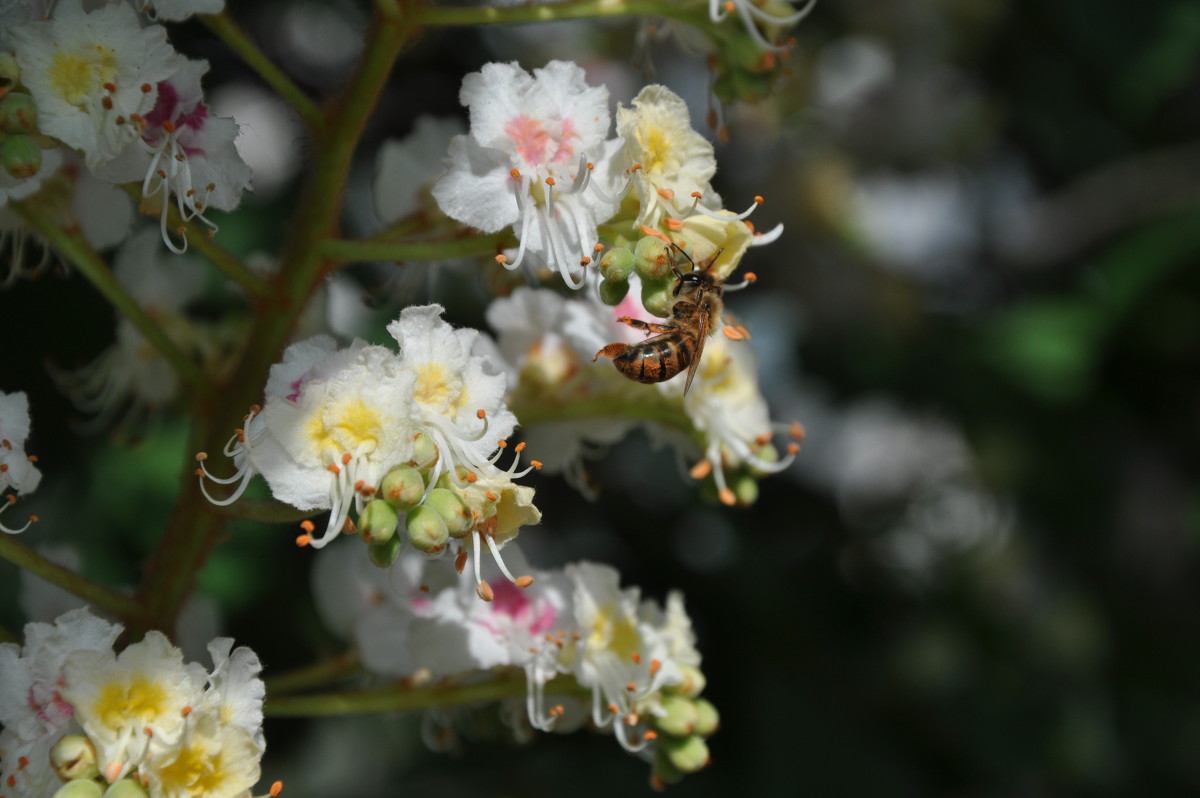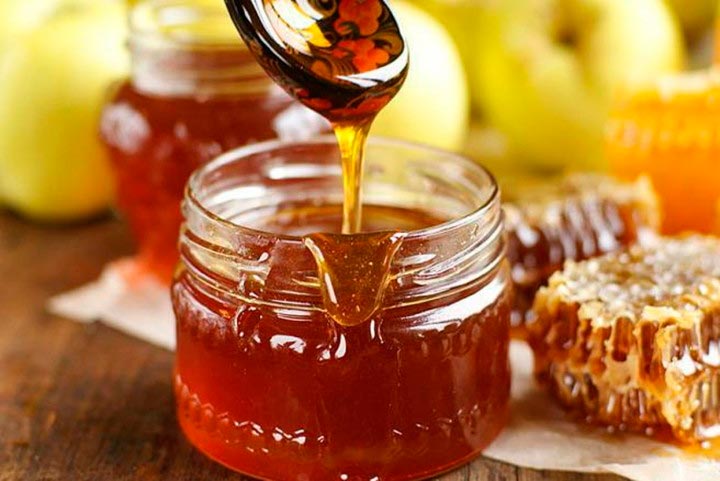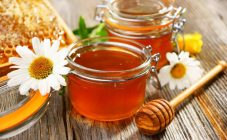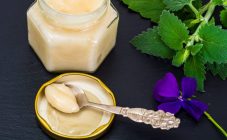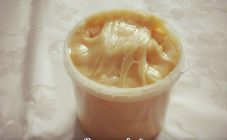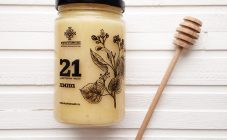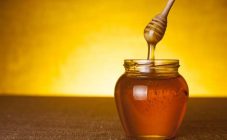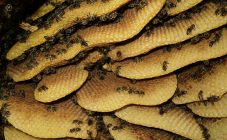Content:
The viscous and sweet product that the hard workers of the bee produce is called honey. Insects travel a laborious path to achieve their goal. Bees fly thousands of kilometers to find the honey plants they need. Collect small portions of nectar, as they physically cannot carry much, and fly with the "prey" to the hive. In flight, they digest the collected pollen in their goiter, and then deposit the resulting mixture in a honeycomb. To prevent it from fermenting, bees secrete formic acid from the poisonous sac. Then each cell is sealed with wax, again made by striped insects. As soon as a certain time has passed, the honey will be ready.
There is a large selection of honey in the world for every taste and color. He, in turn, is classified according to the type of honey plant. And this article will focus on chestnut honey - the most popular among those with a sweet tooth. Readers will learn how to collect it, distinguish it from other varieties and eat it correctly so as not to harm the body.
Product Description
Many factors influence the taste, type and properties of chestnut honey:
- kind of chestnut. It can be undersized, American, Japanese, sowing. Honey is different from each;
- climate: in dry weather, honey will have a fragrant and rich taste, in more humid weather - the taste and aroma will no longer be so saturated.
Chestnut honey is divided into 2 types. You can distinguish them by the type of chestnut honey plant. The first variety is sowing, which is also called edible, and the second is horse, or wild. From the flowers of the first variety, the original product will be dark in color. Accordingly, the light tone of honey is obtained from the wild.
Another feature of this product is that it may not be sugar-coated for a long time. Beekeepers say that from the honey plants of the edible chestnut, honey has the peculiarity of being preserved in liquid form for several years.
The composition of chestnut honey is generally not much different from other types. It contains:
- easily digestible carbohydrates: sucrose, glucose and fructose;
- vitamins: A, B1, B6, B2, E, B9, K, C, PP;
- tannins, tannins;
- trace elements: potassium, manganese, copper, magnesium, fluorine, iodine, phosphorus and barium;
- useful enzymes: catalase, diastase, phosphatase and amylase.
Horse chestnut should not be eaten. But the honey comes out of it of amazing color and taste. Only now it has the ability to thicken quickly. After pumping out, many beekeepers mix it with other no less worthy types of honey, which eliminates the density. The combination of linden and chestnut honey is popular. It turns out to be very tasty and aromatic. The same manipulations can be performed with mountain chestnut honey.
The season for picking chestnut honey
The collection of honey takes place in mid-July. Beekeepers specially take out bee colonies to the chestnut forests. They set up their apiaries and pump out honey as they fill up. Many beekeepers hang their houses on trees. The amount of the product obtained is not very large, since the chestnut blooms for only 2 - 3 weeks, and the honey flower is very small.Therefore, the "catch" of bees is not great. In this connection, only two upper grids are filled in the ley.
Since chestnut honey has a good effect on the bees themselves, they cannot be torn off even after sunset. As a result, some of the bees are lost in the forests while collecting nectars and do not fly back to the apiary.
How to identify a fake honey
Only special laboratories can calculate that honey bought on the market is 100% a real product or a fake. It costs money, time consuming, so it's better to buy chestnut honey right away from well-known beekeepers, and even better at an apiary in the forest.
There are several ways to check chestnut honey for authenticity. How to identify a fake visually? You need to look at the density of the product. The mass of real honey is thick, without foam and precipitation at the bottom. The scent should drain the scent of the flowering chestnut, even if it's subtle. If the presence of burnt sugar is felt, then it is a fake product. Not clean on hand entrepreneurs add it to give regular honey a dark color that matches the characteristics of chestnut honey.
Also, the presence of bee corpses or pieces of wax in honey is not a reason to believe that this is natural honey. Dealers often mislead consumers in this way. And many believe.
In addition, you can check whether real honey is purchased or not at home:
- You need to add 1 tbsp. a spoonful of honey in 1 tbsp. warm water. The real product will dissolve without residue, the fake will leave a residue.
- You can set a drop of chestnut honey on fire, and if we smell caramel, then this indicates a fake.
- To be convinced of the authenticity, it is worth dipping 1 teaspoon in honey and letting it drain from it back into the jar. The real product will have a slight slide on the surface of the jar during this experiment.
Useful properties for the body
Chestnut honey is so healthy that it is popularly recognized as a medical, medicinal product. The benefits of chestnut honey for the body have been repeatedly proven. It manifests itself in the following:
- Anti-inflammatory effect. Chestnut honey is very effective in treating ailments such as asthma and bronchitis. It helps to cope with diseases of the genitourinary system.
- Strengthens the circulatory system. To do this, you need to drink honey infusion for a month. The benefits of honey in this case will be colossal: the walls of blood vessels will become elastic and strong, the heart rate will return to normal, blood pressure will normalize, and atherosclerosis will subside.
- Natural antibiotic. For burns, wounds or cuts, this is first aid at home. Chestnut honey has the strongest bactericidal properties. It also helps in the treatment of respiratory problems.
- Immunomodulator. Strengthens the nervous system, saves from insomnia, helps with stress, energizes, and also relieves fatigue, but only with a regular intake of 1 teaspoon per day.
- Honey antioxidant. Chestnut honey should be eaten periodically as a prophylaxis against cancer and malignant tumors. It also relieves anxiety and blues.
- Natural aid to the gastrointestinal tract and liver. Good for treating gallbladder problems, normalizes appetite. It is the first assistant in the treatment of stomach ulcers, duodenal ulcers and other gastrointestinal diseases.
Who needs to eat chestnut honey
It's safe to say that everyone. However, the dosage depends on age and health status. To understand how to use it correctly, you need to familiarize yourself with the nutritional value of honey:
- proteins - 0.8 g - 1% of the daily value;
- carbohydrates - 81.5 g - 30% of the daily value;
- calorie content - 309 kcal - 15% of the daily requirement;
- energy value - 1293 kJ - 15% of the daily value.
An adult can consume honey without risk to health, 100 g per day. But the recommended dose should not exceed 1-2 tbsp. spoons a day. It is better not to give chestnut honey to children under 1 year old. It can cause an allergic reaction. Older children under 12 years old are allowed 2 teaspoons of sweet chestnut honey.
Diabetics need preliminary consultation with a specialist regarding the intake of this sweet treat. Those who are on a diet can eat honey 1 teaspoon per day. Chestnut honey is very useful for women in position. The product will enrich the body with the required amount of nutrients and will have a good effect on the development of the fetus in the womb, of course, provided that there are no contraindications from the obstetrician.
Contraindications
Chestnut honey, like many other varieties of this product, has contraindications. First, it is not permissible for people with allergies to eat or any other procedure. To understand if honey will harm the body, you need to conduct a test. Drop a couple of drops of honey on the bend of the elbow and wait a quarter of an hour. If you feel a burning sensation and a rash has appeared, then taking the treat is unacceptable. If there was no reaction, then you can eat it, but within the limits of the norm described above.
Basically, this is an excellent product that will always come to the rescue in case of illness or desire to feast on sweets.
3 tips for using chestnut honey
Honey can not only be eaten in its pure form, but also added to tea, baths and applied to wounds.
- If you have problems with the respiratory system, you need to drink tea with chestnut honey and one slice of lemon during the day. This effective remedy also helps with angina and acute bronchitis.
- If you suffer from insomnia, then before going to bed you should take a warm bath, and dissolve a couple of tablespoons of chestnut honey in water. After that, you can sleep without your hind legs.
- A moderate wound can be treated with a mixture of 100 g chestnut honey and 20 g fish oil. Moreover, this drug can be stored in the refrigerator for 2 months.
Chestnut honey is a versatile product that helps with many ailments. It should be like a first aid in every home. It should be remembered that the process of its extraction is very time consuming - hundreds of bees work day and night for the benefit of humanity. It is necessary to respect their work and use what they produce for the benefit of the body.
